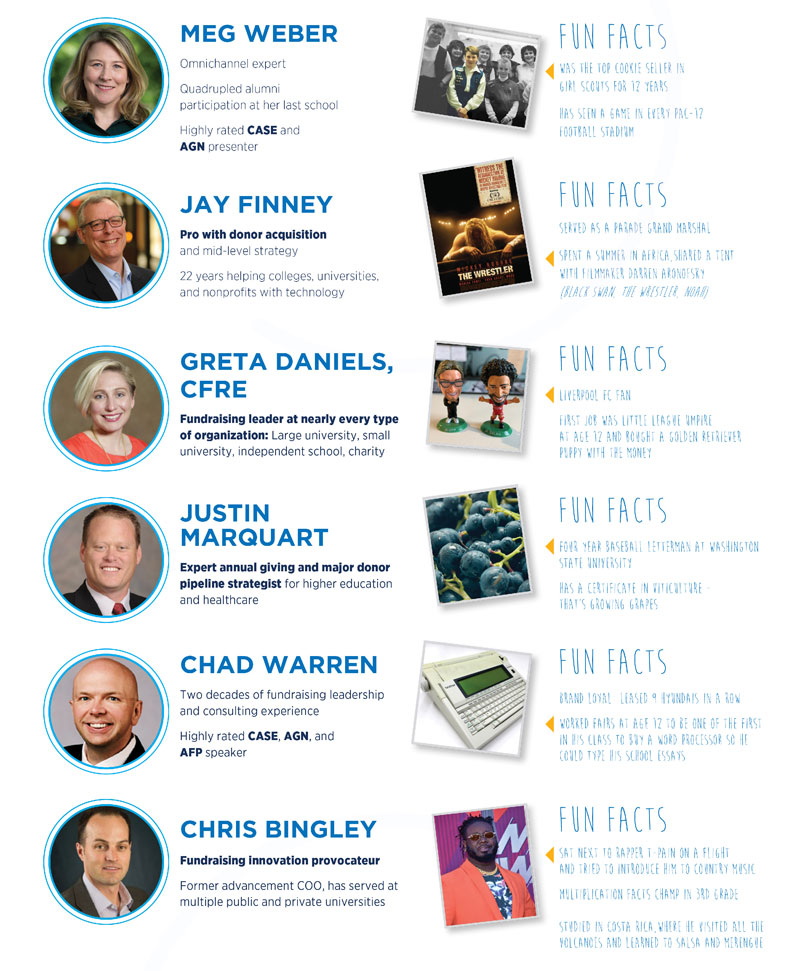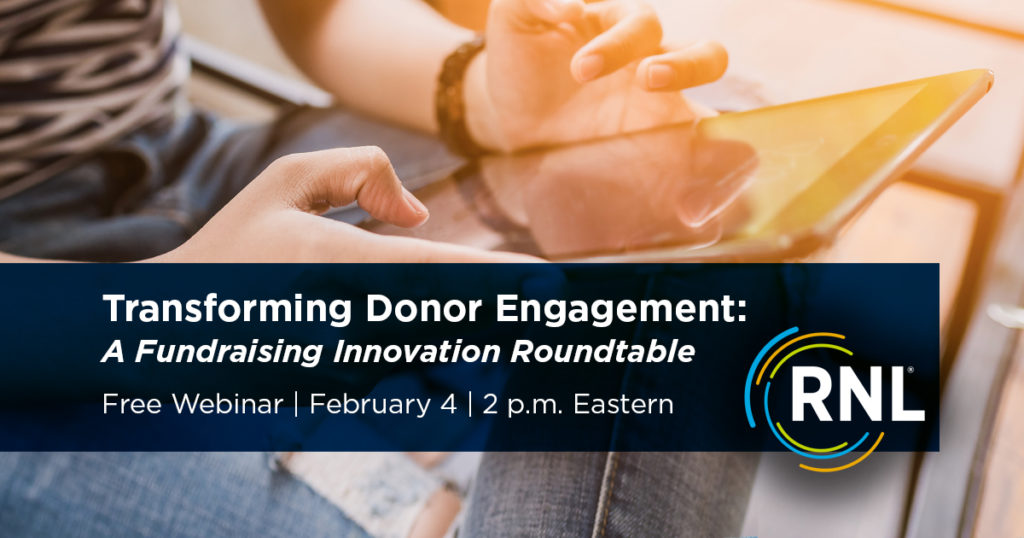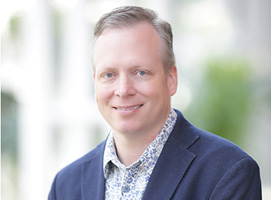fundraising
Maximizing Donor Engagement Strategy: RNL Experts Chat
I recently talked with the two newest additions to our team of donor engagement experts, Justin Marquart and Chad Warren, to get their take on this important topic. They have decades of experience crafting donor engagement strategy. Our chat covers some of the important steps you need to take to bring your plan to the next level.
Brian: Hello, Justin and Chad. Welcome to the RNL family.
To help people get to know you a bit better, we’re going to talk today about the best ways to get your message through to supporters in the crowded field of advertising and other philanthropic appeals. Our supporters receive hundreds of messages every day. Whether it’s other places asking for donations, advertisers, or just life in general, there is a lot of competition to get our message seen. What’s the best way for fundraisers to break through the noise?
Chad: To differentiate yourself from the competition, first you have to know your competition. What is it about your institution that sets you apart? For example, In higher education, we know we are changing lives and want to provide access and affordability to students—this message is the same across the 5,300 colleges and universities in the United States. Many will be in a campaign. In many regards, we are all the same. You need to set yourself apart. What else is your institution doing that is different? What needs do you have that are truly unique? What accomplishments should you boast about? To differentiate yourself from the competition, first you have to know your competition and then market your institution differently so that you are noticed.
Justin: That’s right, Chad. It’s important to craft these communications so that you’re perceived as authentic to your constituents. You can do this pretty easily when you’re working with highly engaged and highly invested donors one on one. But how do you authentically connect with the constituents in your discovery portfolio or those who are the level of an annual gift or leadership giving level? Using tools that allow for personalized outreach are key.
Chad: That’s right. When you’re talking to donor’s at scale, you’re in the mix with so much other noise. I’ve heard that on average we receive in excess of 500 marketing messages a day and more than 100 of them are electronic. The average American is contacted by 20 charities a year. It’s the personalized communication that is going to break through this noise.
Brian: It’s a little crazy to think of that much competition. Some of that noise is actually from us—most organizations have the strategy of just sending everything to everyone. What do you believe is the best way to organize a campaign across all the channels we use?
Justin: You’ll need to employ some of the tested and successful techniques we see at the best organizations, many of them in the commercial world. Creating constituent personas based on your data and surveys and then segmenting your outreach on a highly targeted and personal level is going to be key. Great examples can be found in many of the successful online retailers and media companies like Amazon and Netflix. These organizations personalize outreach and deliver highly targeted, relevant information with direct calls to action at the right time.
Chad: I agree. It’s going to take really well-tailored strategy to get the message out. Whether it’s the announcement of the institution entering the public phase of a campaign, congratulating the basketball team for entering a tournament or the celebration of your university’s new president—these messages need to be sent to everyone, in multiple ways. There is a time and a place for mass-communication. We have all heard of the rule of seven—that a potential prospect has to see or hear our message at least seven times before they take action.
Our campaigns have to employ multiple touchpoints and a variety of vehicles to be successful. And as much as we want to be able to point to a specific channel driving or producing fundraising results, we have to recognize in this new digital age, it has become more difficult to understand all the components that make our constituents react. If a fall direct mail appeal declined by 10 percent in donor count and did not perform as it historically once did, but the crowdfunding projects secured 30 percent more donors during the same period (because you sent an e-solicitation and used digital ads), you experienced a success. It does not mean to forgo the direct mail appeal in the future as the channels complement each other. Looking at the overall results is what matters today.
Brian: Those are great points. The things you mentioned require technology and expertise on the constantly changing world of donor engagement and communications. What suggestions do you have for advancement leaders looking to find a partner, and what kind of clients do you most like to work with?
Justin: You need to find a partner who’s willing to help you challenge the norm. In today’s world, the saying, “you either need to innovate or die” has never been more true. So many institutions continue to follow the old models of operating in silos with their communications. Direct mail, email, phonathons, digital communications are all treated as separate, stand-alone channels. Some people are adopting email, text, or digital communications but continue to deliver these alone with no synergy. I love working with partners who are willing to break down these silos and take an omnichannel approach (past multichannel). They are going to be the winners over this next decade and beyond.
Brian: I agree. Being willing to really leverage these communications as a symphony of messaging is crucial, and a good strategy to do that is key.
Chad: That’s right. In the strategy sessions, look for a company and people who will be your partner, an extension of your team. I believe there is a difference between a vendor or third party versus creating a true partnership. A valuable partner will assist in developing opportunities by contributing substantial knowledge, capability, and resources. A partner should always excite you and will do what is best for you and your institution.
I am energized with clients who recognize that in order for higher education to be relevant, we must be different and daring. What I find interesting is that in other sectors, the use of emerging technology, utilizing artificial intelligence and employing multiple, coordinated channels is the norm but in our industry, people who do this are viewed as disruptors. I say, so be it. Let’s bring on the disruption together. Let’s “think outside the inbox” together. Let’s succeed together.
Brian: Thanks, Justin and Chad, we’re excited to have you on the team.
Fun facts about our fundraising leaders (click the image for a larger size)
Read our previous Q&A with our fundraising leaders Meg Weber, Jay Finney, and Greta Daniels.

Hear more from our leaders in their webinar
Listen to Justin and Chad continue their discussion about donor engagement with Meg Weber and Chris Bingley during their webinar Next Gen Donor Engagement: A Fundraising Innovation Roundtable.

Or talk with us during a free consultation to find out how you can increase donor engagement and your fundraising results. Request your consultation now.
